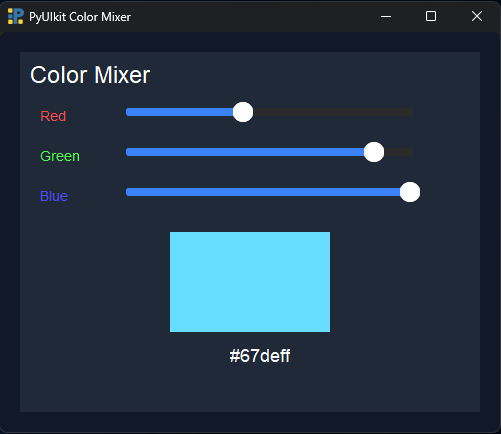Kafka Fundamentals: kafka controller
The Kafka Controller: A Deep Dive for Production Engineers
1. Introduction
Imagine a large-scale e-commerce platform migrating from a monolithic database to a microservices architecture. Order fulfillment, inventory management, and customer notifications are now independent services communicating via events. A critical requirement is ensuring exactly-once processing of order events, even during broker failures or network partitions. This necessitates a robust understanding of Kafka’s internal mechanisms, particularly the role of the Kafka Controller. The controller isn’t just a component; it’s the brain orchestrating the cluster’s metadata and ensuring consistency in a distributed environment. This post dives deep into the Kafka Controller, focusing on its architecture, operational considerations, and performance tuning for production deployments. We’ll assume familiarity with Kafka concepts like partitions, brokers, and replication.
2. What is “kafka controller” in Kafka Systems?
The Kafka Controller is a crucial component responsible for managing the cluster’s metadata. It’s not involved in the actual data transfer between producers and consumers. Instead, it handles tasks like topic creation, partition assignment, broker leadership election, and replica management. Prior to Kafka 2.8, the controller relied on ZooKeeper for maintaining metadata and coordinating elections. With the introduction of KRaft (Kafka Raft metadata mode – KIP-500), the controller now manages its own metadata using a self-managed Raft quorum, eliminating the ZooKeeper dependency.
Key Config Flags (server.properties):
-
controller.listener.names: Comma-separated list of listeners the controller binds to. -
process.roles: Defines the roles a broker can take. Must includecontrollerfor a broker to be eligible. -
node.id: Unique identifier for the broker. -
kraft.node.id: Unique identifier for the controller node in KRaft mode. -
controller.quorum.voters: (KRaft mode) List of controller node IDs participating in the Raft quorum.
Behavioral Characteristics:
- Exactly One Controller: At any given time, only one broker acts as the active controller.
- Leader Election: In ZooKeeper mode, ZooKeeper handles leader election. In KRaft mode, the Raft protocol manages election.
- Metadata Consistency: The controller ensures metadata consistency across all brokers.
- Automatic Failover: If the active controller fails, a new controller is automatically elected.
3. Real-World Use Cases
- Partition Reassignment: Scaling a topic by increasing the number of partitions requires the controller to reassign partitions to brokers, ensuring even distribution and load balancing.
- Broker Failure Handling: When a broker goes down, the controller detects the failure, initiates leader election for affected partitions, and updates the cluster metadata.
- Consumer Group Rebalancing: When consumers join or leave a group, the controller coordinates the rebalancing process, assigning partitions to consumers. Frequent rebalances can indicate issues with consumer heartbeats or session timeouts.
- Multi-Datacenter Replication (MirrorMaker 2): The controller plays a role in coordinating metadata synchronization between clusters in different datacenters, ensuring consistent topic and partition configurations.
- Schema Evolution with Schema Registry: While Schema Registry isn’t directly managed by the controller, changes to schemas often trigger metadata updates that the controller must handle, especially when compatibility checks are enforced.
4. Architecture & Internal Mechanics
graph LR
A[Producer] --> B(Kafka Broker 1);
A --> C(Kafka Broker 2);
D[Consumer] --> B;
D --> C;
B --> E{Kafka Controller};
C --> E;
E --> F[Metadata Store (ZooKeeper/KRaft)];
B -- Replication --> C;
style E fill:#f9f,stroke:#333,stroke-width:2px
The diagram illustrates the core interaction. Producers and Consumers interact with Brokers. The Controller maintains metadata in ZooKeeper (pre-KRaft) or its internal Raft log (KRaft). Brokers replicate data amongst themselves, and the Controller ensures the metadata reflects the current state of the cluster.
Key Internal Components:
- Partition Assignment Logic: Algorithms (e.g., uniform, rack-aware) determine how partitions are distributed across brokers.
- Leader Election Manager: Handles the election of partition leaders.
- Replica Management: Monitors the health of replicas and initiates replica transitions if necessary.
- Topic Management: Handles topic creation, deletion, and configuration changes.
- Controller Quorum (KRaft): Maintains a consistent view of the cluster metadata through the Raft consensus algorithm.
5. Configuration & Deployment Details
server.properties (Controller Broker):
process.roles=controller,broker
controller.listener.names=PLAINTEXT://:9093
kraft.node.id=0
controller.quorum.voters=0@<controller_host>:9093,1@<controller_host2>:9093,2@<controller_host3>:9093
consumer.properties:
group.id=my-consumer-group
bootstrap.servers=<broker_host1>:9092,<broker_host2>:9092
auto.offset.reset=earliest
enable.auto.commit=true
CLI Examples:
- Create a topic:
kafka-topics.sh --create --topic my-topic --partitions 10 --replication-factor 3 --bootstrap-server <broker_host>:9092 - Describe a topic:
kafka-topics.sh --describe --topic my-topic --bootstrap-server <broker_host>:9092 - View consumer group details:
kafka-consumer-groups.sh --describe --group my-consumer-group --bootstrap-server <broker_host>:9092 - Reassign partitions (carefully!):
kafka-reassign-partitions.sh --reassign-partitions-topic my-reassignment-topic --broker-list 0,1,2 --partitions 0-9 --bootstrap-server <broker_host>:9092
6. Failure Modes & Recovery
- Controller Failure: Automatic failover to a standby controller. Brief metadata unavailability during election.
- Broker Failure: Controller detects failure, initiates leader election for affected partitions. Data loss possible if replication factor is insufficient.
- ISR Shrinkage: If the number of in-sync replicas falls below the minimum required, the partition becomes unavailable.
- Message Loss: Can occur due to broker failures before replication completes. Idempotent producers and transactional guarantees mitigate this.
Recovery Strategies:
- Idempotent Producers: Ensure exactly-once semantics by assigning a sequence number to each message.
- Transactional Guarantees: Allow atomic writes across multiple partitions.
- Offset Tracking: Consumers track their progress to avoid reprocessing messages.
- Dead Letter Queues (DLQs): Route failed messages to a separate topic for investigation.
7. Performance Tuning
-
linger.ms(Producer): Increase to batch more messages, reducing the number of requests to the controller (indirectly). -
batch.size(Producer): Larger batches improve throughput but increase latency. -
replica.fetch.max.bytes(Broker): Controls the maximum amount of data a follower can request from a leader during replication. - KRaft Configuration: Properly sizing the Raft quorum and tuning Raft-specific parameters (e.g., election timeout) is critical for performance in KRaft mode.
Benchmark References: Controller performance is typically measured by the time it takes to complete operations like partition reassignment or topic creation. Expect sub-second completion times for these operations in a well-tuned cluster. Throughput is less directly measurable but impacts overall cluster responsiveness.
8. Observability & Monitoring
Critical Metrics (JMX):
-
kafka.controller:type=KafkaController,name=ActiveControllerCount: Should be 1. -
kafka.controller:type=KafkaController,name=OfflinePartitionCount: Indicates partitions without a leader. -
kafka.controller:type=KafkaController,name=LeaderElectionRate: High rate suggests instability. -
kafka.server:type=BrokerTopicMetrics,name=MessagesInPerSec: Monitor topic throughput. - Consumer Lag: Track consumer lag using tools like Burrow or Kafka Manager.
Alerting Conditions:
-
ActiveControllerCount != 1: Critical alert. -
OfflinePartitionCount > 0: Warning/Critical alert. -
LeaderElectionRate > threshold: Warning alert. - High Consumer Lag: Warning/Critical alert.
9. Security and Access Control
- SASL/SSL: Encrypt communication between brokers and the controller.
- ACLs: Restrict access to controller operations (e.g., topic creation) to authorized users.
- KRaft Security: Secure the Raft communication channel using TLS.
- Audit Logging: Enable audit logging to track controller operations for security and compliance purposes.
10. Testing & CI/CD Integration
- Testcontainers: Spin up ephemeral Kafka clusters for integration testing.
- Embedded Kafka: Run a Kafka instance within your test suite.
- Consumer Mock Frameworks: Simulate consumer behavior for testing rebalancing scenarios.
- Schema Compatibility Tests: Verify schema compatibility before deploying schema changes.
- Throughput Tests: Measure the impact of configuration changes on cluster performance.
11. Common Pitfalls & Misconceptions
- Rebalancing Storms: Caused by frequent consumer heartbeats or short session timeouts. Increase
session.timeout.msandheartbeat.interval.ms. - Offline Partitions: Often due to broker failures or network issues. Investigate broker logs and network connectivity.
- Slow Topic Creation: Can be caused by high load on the controller or insufficient resources.
- Incorrect Partition Assignment: Leads to uneven load distribution. Review partition assignment strategy.
- ZooKeeper Issues (pre-KRaft): ZooKeeper instability can disrupt controller operations. Monitor ZooKeeper health.
12. Enterprise Patterns & Best Practices
- Dedicated Controller Brokers: Isolate controller functionality on dedicated brokers to minimize interference.
- Multi-Tenant Cluster Design: Use resource quotas and ACLs to isolate tenants.
- Retention vs. Compaction: Choose appropriate retention policies based on data usage patterns.
- Schema Evolution: Use a Schema Registry and enforce compatibility checks.
- Streaming Microservice Boundaries: Design microservices to consume and produce events from well-defined topics.
13. Conclusion
The Kafka Controller is the linchpin of a reliable and scalable Kafka deployment. Understanding its architecture, failure modes, and performance characteristics is essential for building robust real-time data platforms. Prioritizing observability, implementing robust testing, and adhering to best practices will ensure your Kafka cluster can handle the demands of a production environment. Next steps include implementing comprehensive monitoring, building internal tooling for managing controller operations, and continuously refining your topic structure to optimize performance and scalability.


